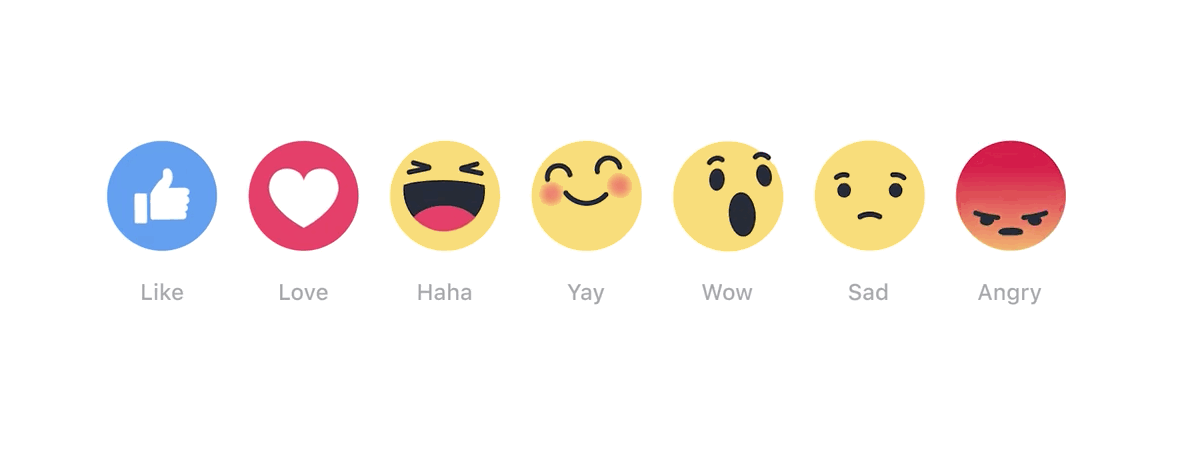
When we first heard about the new Facebook Reactions we were quite excited, as it potentially provided a new metric that could help content makers and advertisers target their audience with greater accuracy. In addition to Liking a post, users can now respond with Love, Haha, Yay, Wow, Angry, and Sad. Facebook reactions give users even more ways to share how they feel about a particular post. The official press release by Facebook on October 8th, 2015, hinted that eventually the goal of these new emoticons will help users see content that is more related to them. During initial testing in Spain and Ireland, Reaction emoji’s were treated the same as Likes, but are there plans to measure each emoji individually? Will users who like sad posts will be rewarded with more sob stories in their news feed? Apparently, that is the main goal, but it isn’t something that affects our news feeds just yet.
What Facebook Reactions mean to content creators, advertisers and marketers?
Until Facebook Reactions came out, measuring how a Facebook post made people feel was almost impossible. We could only see how many people ‘Liked’ a successful posts, but we didn’t know for certain the reason (Facebook also provides a negative feedback metric within the insights, but most users aren’t even aware of such feature). However, now everyone can see how each particular post affected the viewers, right down to their mood. No longer will a picture of poor starving children (1 like = 1 pray) receive millions of likes, which suggests people around the world love when children die of hunger. Thanks to Facebook Reactions, people will now be able to properly react to such content. Facebook users can finally tell everyone what they love, what makes them laugh, what wows them, or what makes them super angry. These new metrics will provide tons of additional insight for marketers looking to reach their audience in a meaningful way.
Do Facebook Reactions increase reach? Right now, no.
Do Reactions impact your reach in any way? Apparently not. Facebook reported that they’ll be measuring Reactions the same as they do Likes. No matter which Reaction a user chooses, it will be counted as another like. However, in the future, Facebook will start to use the new Reactions to get a better idea of the type of content people like seeing in their news feed. This will be a great way of giving people more of the content they want.
In conclusion…
Reactions are a great new tool for both users and marketers. They’ll provide everyone a greater ability to share and gain more insight into what’s loved and what’s not. Users can better share their reactions to a particular post, while marketers can learn how their content engages people. Overall it’s a win-win all around.